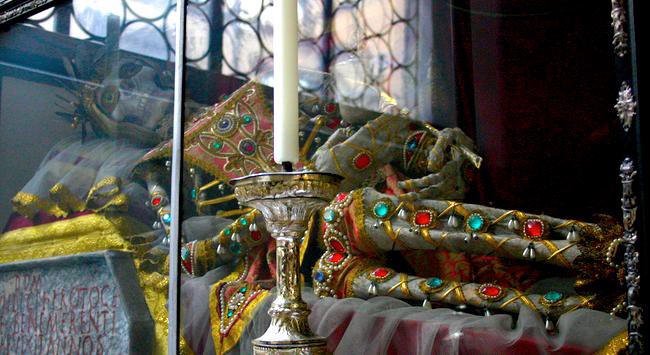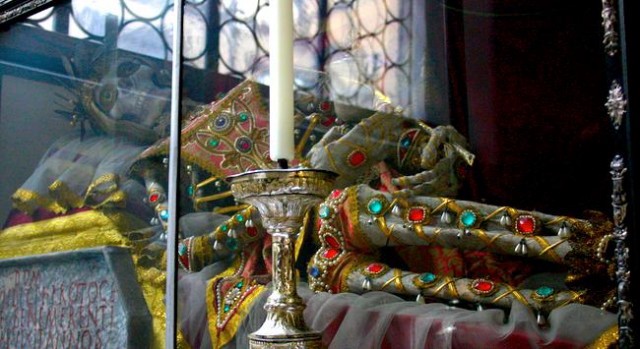Bejeweled Catholic Skeletons: “For a personal touch, some sisters slipped their own rings onto a…
Bejeweled Catholic Skeletons: “For a personal touch, some sisters slipped their own rings onto a skeleton’s fingers”


A super-freaky piece over at Smithsonian Magazine details how, in the sixteenth century, churches in Northern Europe started snatching skeletons from the Roman catacombs, decorating them with jewels, and displaying them in order to “restore the morale” of their plundered parishes.
The holy bodies became wildly sought-after treasures. Every Catholic church, no matter how small, wanted to have at least one, if not ten. The skeletons allowed the churches to make a “grandiose statement,” Koudounaris says, and were especially prized in southern Germany, the epicenter of “the battleground against the Protestants.” Wealthy families sought them for their private chapels, and guilds and fraternities would sometimes pool their resources to adopt a martyr, who would become the patron of cloth-makers, for example.
At least one. If not ten! But how did you guys know which skeletons were holy and which were just regular?
The process of ascertaining which of the thousands of skeletons belonged to a martyr was a nebulous one. If they found “M.” engraved next to a corpse, they took it to stand for “martyr,” ignoring the fact that the initial could also stand for “Marcus,” one of the most popular names in ancient Rome. If any vials of dehydrated sediment turned up with the bones, they assumed it must be a martyr’s blood rather than perfume, which the Romans often left on graves in the way we leave flowers today. The Church also believed that the bones of martyrs cast off a golden glow and a faintly sweet smell, and teams of psychics would journey through the corporeal tunnels, slip into a trance and point out skeletons from which they perceived a telling aura. After identifying a skeleton as holy, the Vatican then decided who was who and issued the title of martyr.
The bodies could take up to three years to decorate. Can you imagine decorating a skeleton every day for three years? I’d go crazy. Sounds like the nuns kind of did go crazy.
They spun fine mesh gauze, which they used to delicately wrap each bone. This prevented dust from settling on the fragile material and created a medium for attaching decorations. Local nobles often donated personal garments, which the nuns would lovingly slip onto the corpse and then cut out peepholes so people could see the bones beneath. Likewise, jewels and gold were often donated or paid for by a private enterprise. To add a personal touch, some sisters slipped their own rings onto a skeleton’s fingers.
Photo via Killfile/Flickr